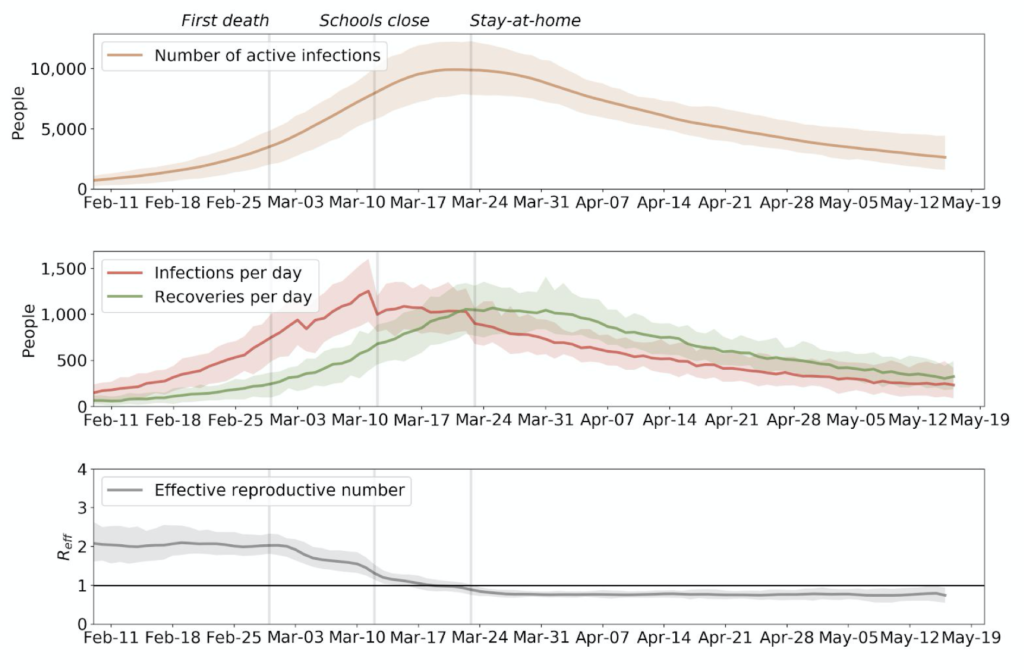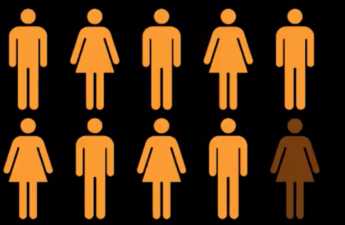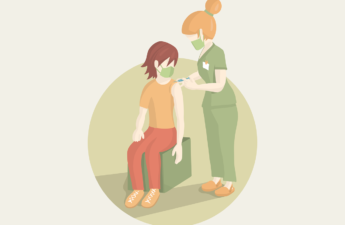Results from new model show the need for a robust contact tracing program and other measures to prevent resurgence in epidemic

A new report also found that there was little room to increase public interaction without risk of exceeding the effective reproductive rate of 1.0, a critical threshold for preventing growth in new cases locally.
This report finding signals the need for caution in reopening to avoid a return to rapidly growing infections and deaths.
According to the a new modeling report by the the Bellevue-based Institute for Disease Modeling (IDM). a comprehensive program of increased testing, isolation of infected people, and contact tracing with quarantine of home and work contacts could prevent epidemic growth as King County gradually re-opens.
“Our community’s initial compliance with the stay at home directive and other COVID-19 precautions such as physical distancing, avoiding non-essential activities and large gatherings and good hand hygiene has greatly reduced the spread of COVID-19 in King County,” said Dr. Jeff Duchin, Health Officer for Public Health – Seattle & King County.
“This report suggests that additional efforts will be needed to allow us to gradually increase our activities without risking a dangerous increase in cases, hospitalizations and severe illnesses that could overwhelm our healthcare system,” he said.
About the model
This new report is different than previous IDM analyses for King County, which work to understand and explain the current and historical trajectory of the COVID-19 epidemic locally.
By comparison, the “Covasim” model allows for more complex simulations in order to better understand and estimate the impact of interventions such as home quarantine and contact tracing, and how they would enable the relaxation of some physical distancing measures as part of reopening the economy.
The two types of reports complement one another and are drawn from the same data sources for King County supplied by the Washington State Department of Health.
Covasim is an agent-based model, meaning that it simulates the actions of individuals and their contacts to answer questions about the spread of disease.
The Covasim model, which is open source, uses demographic information such as age and population size; realistic transmission networks, including in the home, schools, workplaces and communities; age-specific disease outcomes; and disease-transmission dynamics.
This new report generated by the Covasim model simulates a representative sample of 2.25 million King County residents.
“The COVID-19 pandemic has created an urgent need for models that can predict epidemic trends, explore intervention scenarios and estimate resource needs,” said Dr. Daniel Klein, Computational Science Research Lead at IDM. “Agent-based models such as Covasim represent another powerful tool for decisionmakers to understand the impact of different policy choices related to reopening society and the economy.”
While agent-based modeling is able to capture many details of populations and disease transmission, the work has important limitations and assumptions that could impact the findings.
They include inherent delays in data; the choice of model input data; a skewing toward younger ages for cases and deaths in the model; and not accounting for COVID-like symptoms due to other respiratory conditions.
Details of report findings
The goal of the Covasim analysis is to quantify the delicate balance between relaxing physical distancing and increasing countermeasures, including contact tracing, to keep the COVID-19 epidemic under control. The aim is to keep the effective reproductive rate under 1.0, to avoid a rapid rise in cases.
The model found that having a comprehensive program consisting of household and workplace quarantine, contact tracing, and increased testing could allow for increasing levels of public activity and reopening of the economy, reflected in the report as transmission potential. Transmission potential is reported as a percentage, with 100% equaling pre-pandemic levels of public activities.
“Agent-based models like Covasim have many inputs to account for the local context and latest science. However, even if we plug in best-guess numbers for King County, there’s a lot we don’t know,” said Klein. “We use computer algorithms to automatically choose values for the least-known model inputs, with reasonable limits, to ensure the model output match the number of tests, diagnoses, and deaths by age.”
One of the unknown model inputs was the amount people are avoiding COVID-19 by staying home from work and taking personal precautions. By calibrating to the data, the IDM researchers found that as of April 25th, transmission at workplaces and in the community was down to just 33% of what it would have been if no distancing or precautions were taken. This result is necessarily in the past because COVID infections take a while to show up in data.
The model shows how increased transmission associated with a return to workplaces and public activities can be offset by varying levels of countermeasures.
Several possible countermeasures are explored, ranging from simple isolation of diagnosed individuals to a comprehensive program that includes for additional testing, contact tracing, and high levels of compliance with household quarantine.
Compared to the estimated level of 33% transmission potential on April 25th, comprehensive measures could counteract an increase in transmission potential up to 75% of pre-COVID levels. While schools remain closed in this scenario, some lesser level of distancing measures would be retained, and will likely be needed until effective treatments and a vaccine are developed. One such measure not included in the IDM report is cloth face coverings, which people in King County have been directed to use and could further reduce COVID-19 risk.
Another finding of the report is that based on the level of activity on April 25th, the transmission potential in workplaces and in the community could be increased marginally from 33% on April 25th to 38% while still avoiding a rapid rise in cases. However, this scenario does not take into account any potential increases in public interaction patterns that may have occurred since that time. As a result, this finding may no longer be accurate, spotlighting the need for caution in reopening.
Next steps
Dr. Duchin detailed community-wide actions needed to reopen the economy and prevent another surge in local cases:
“To move forward while decreasing risk sufficiently, we need to diagnose people with COVID-19 earlier in the course of illness and ensure that infected people are safely and rapidly isolated from others. We also need to ensure that the household members and other close contacts of COVID-19 cases are rapidly identified and quarantined.
“It’s critical to remember that many COVID-19 cases are spread from people without symptoms. All of us must continue to do everything we can to prevent ourselves from becoming infected and from spreading COVID-19 to others unknowingly.
“For example, all businesses, workplaces and other organized activities should be sure to take the required COVID-19 safety measures to reduce the risk of spread and protect their workers and the public.
“We also need to continue to practice physical distancing, minimize close contact with others in the community, and avoid poorly ventilated areas and crowded places where distancing is not possible. Frequent hand washing and use of hand sanitizer and regularly cleaning and disinfecting frequently touched surfaces remain important. Please remember to use cloth face masks in public to protect one another and reduce the spread of COVID-19 as we increase our activities.”
Report link: https://covid.idmod.org//data/Modeling_countermeasures_for_balanced_reopening_King_County_Washington.pdf
For more information about the open source Covasim model and its methodology: https://covid.idmod.org/data/Covasim_model_report.pdf
IDM shapes global efforts to eradicate infectious diseases and to achieve permanent improvements in the health of those most in need. An institute within the Global Good Fund, IDM is a collaboration between Intellectual Ventures and Bill and Melinda Gates. IDM is cntributing modeling and analytic services to local and state governments to support COVID-19 response efforts.


